Drawing the Proportions of the Human Body
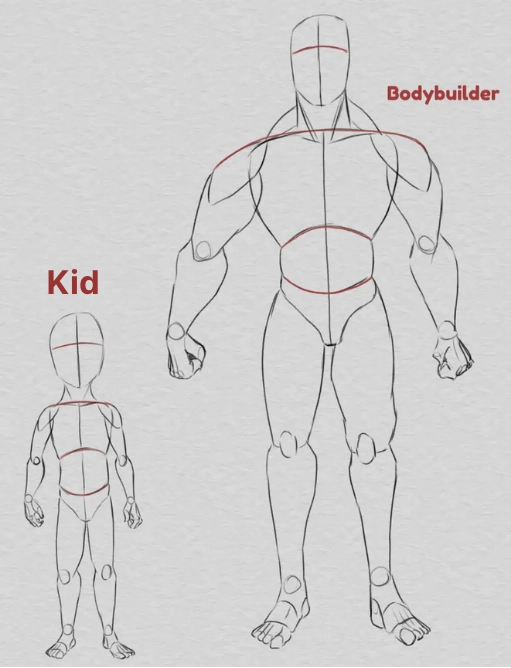
If faces vary greatly from one individual to another, bodies are even more versatile when it comes to human anatomy, size, age, etc. Multiple factors play a role in human figure proportions. In this article, we will explore how to draw accurate and varied bodies.
A Simple Method: The Canons of Absolute Proportions
The simplest and most common method for drawing proportionate bodies is that of absolute proportions, also known as the head method. It involves using the proportions of the head to determine those of the body.
So I will start by drawing the base of a head. If you do not know how to draw a proportionate head, feel free to check out our article on the topic!
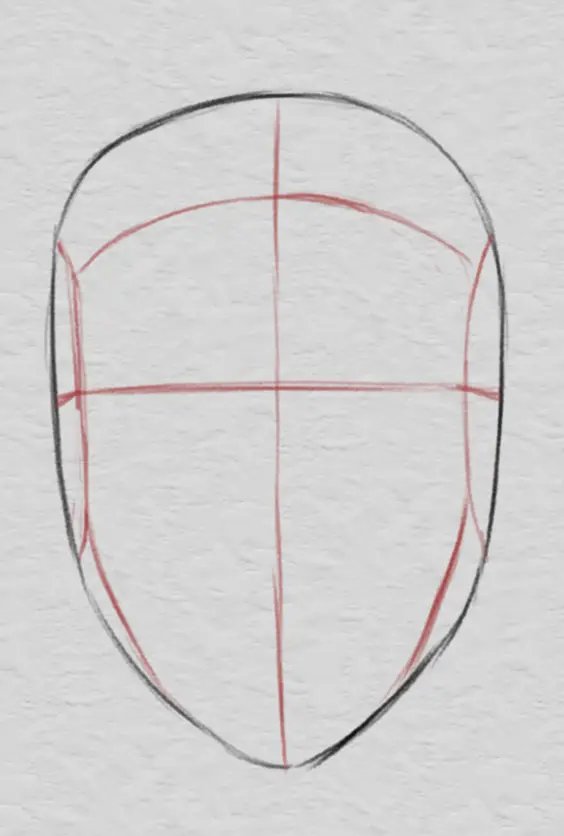
Now, I will place a proportion grid on my paper. This grid is two heads wide and eight heads tall. The tiles of my grid are as tall as the head, but slightly wider. We can number the rows (or zones) from 1 to 8.
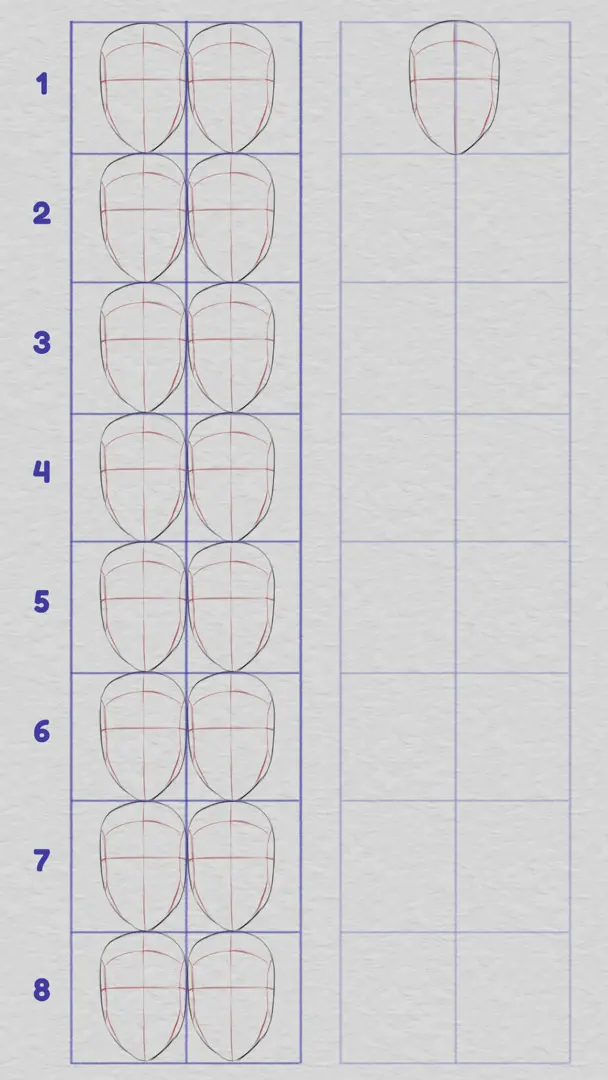
I will use this grid to place the first large blocks, namely the chest, abdomen, and pelvis. The chest is placed in the area between lines 2 and 3 and measures just over one head in length. The pelvis is located on line 4 and measures slightly less than one head in length. Finally, the abdomen connects the chest to the pelvis. I take this opportunity to connect the head to the chest with the neck.
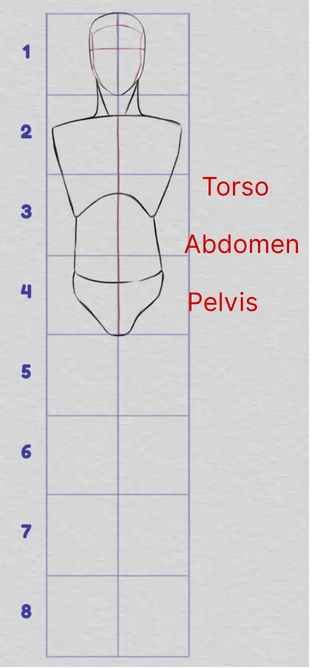
Drawing joints on the human body
Let's add the joints. The shoulders are located on line 2, at the top of the torso. The elbows coincide with the bottom of the torso, in zone 3. The wrists reach the upper part of the pelvis, in zone 4. The knees are placed at the end of zone 6, and the ankles below the middle of line 8.
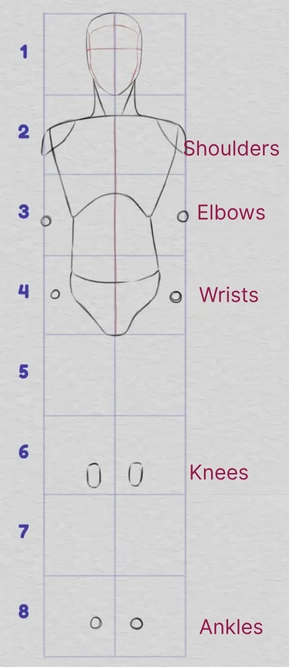
To finish our main blocks, we can add the hands on line 5 and the feet below the ankles, in zone 8. Here, I'm representing them in a very simplified way because their details will be covered in other articles.
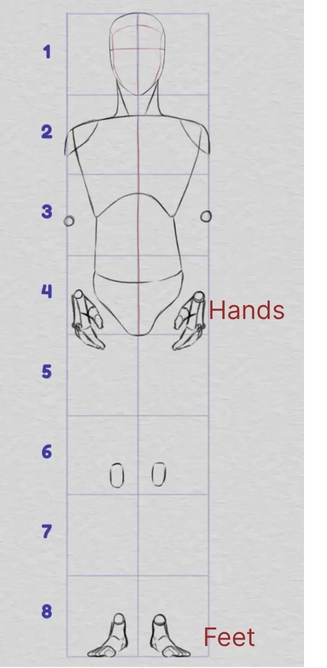
We can connect all these joints with lines: this is what is called the wireframe model.
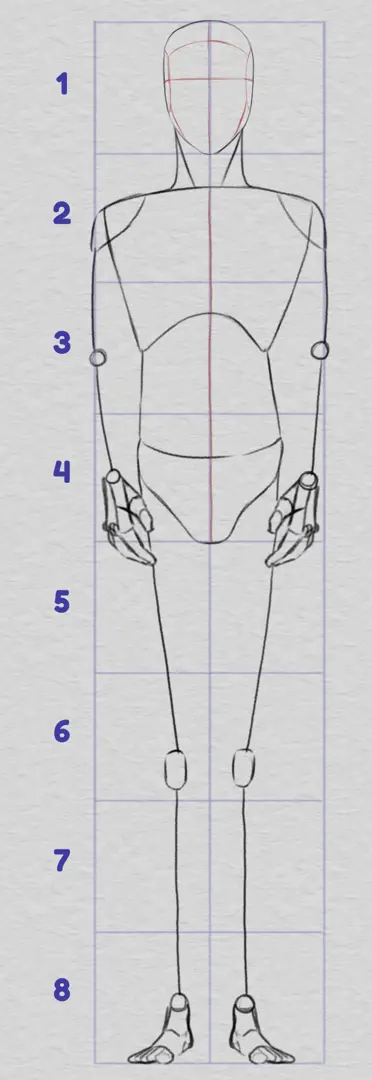
How to add volume when drawing the human body
Finally, we can add volume around these iron wires to create the base of our body.
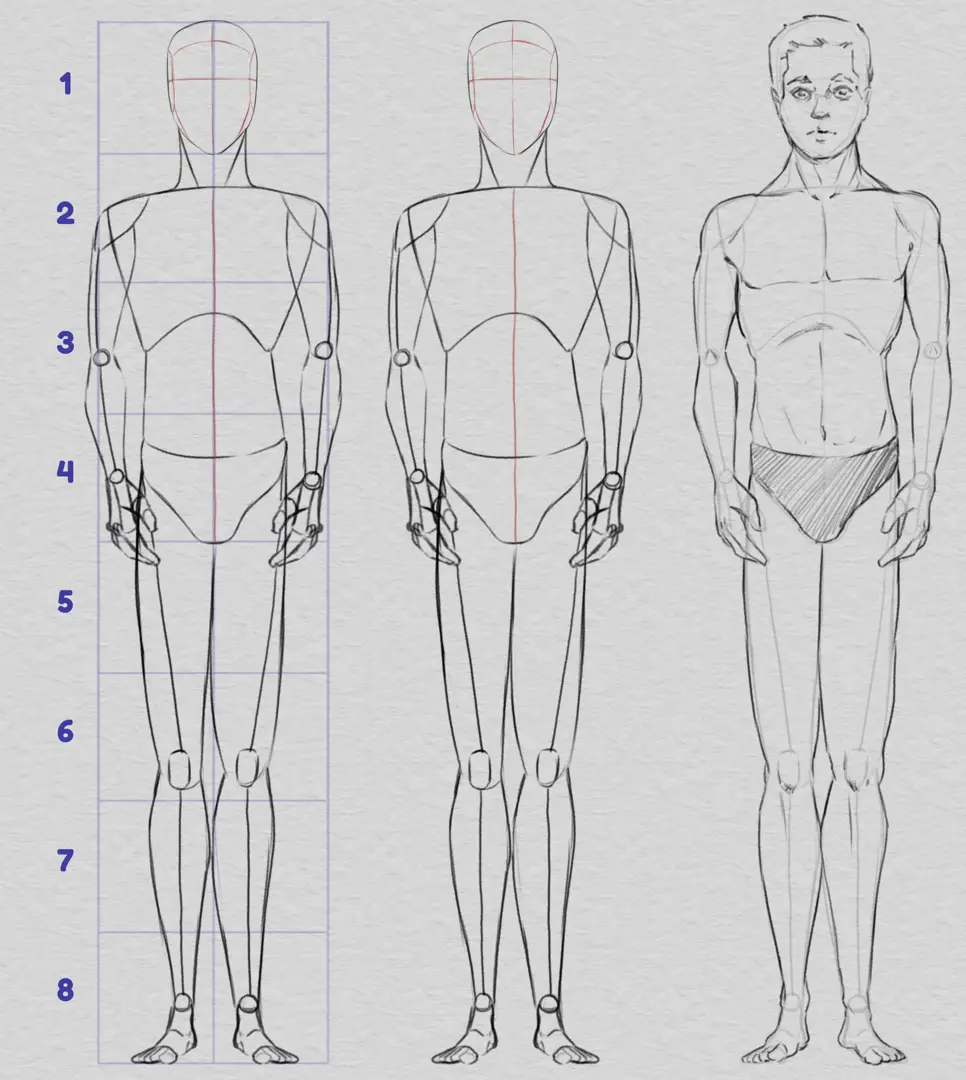
Like the head, these simple shapes can also be oriented at different angles. Here are two examples showing the same body from the side and at a 3/4 view, along with the orientation lines of the large body parts.
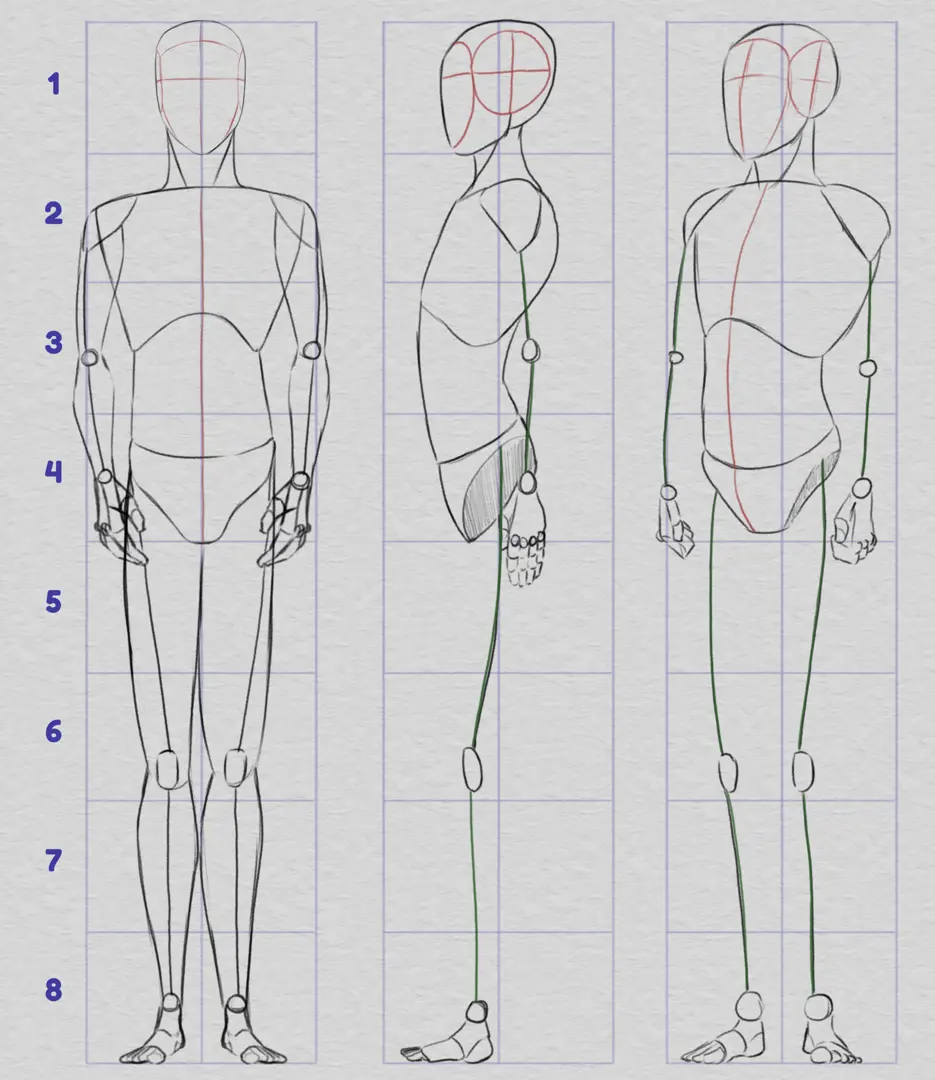
These proportions correspond to those of an adult man about 1.80m tall. It is possible to use the same method for an adult woman or a teenager by reducing the size of the grids, but the body shapes remain rigid and limited.
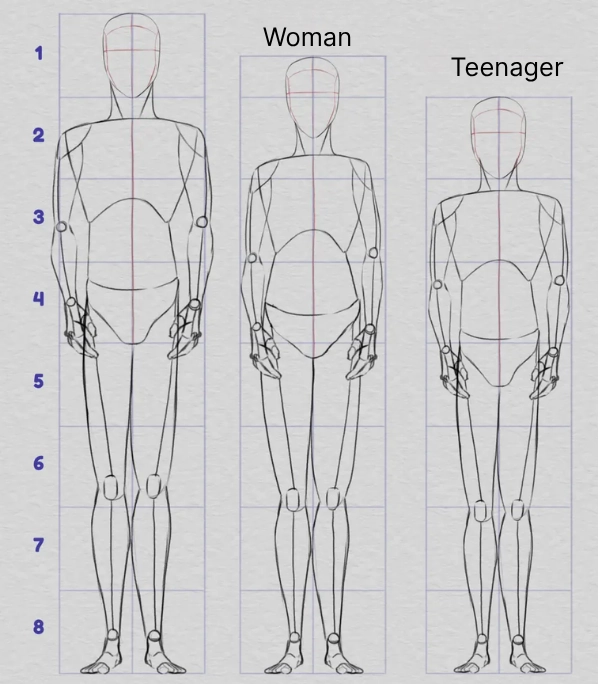
A comprehensive method: relative proportions
The absolute proportions method has limitations. Indeed, although it is easy to use, it is based on canons, that is, standardized proportions. It makes it difficult to draw characters with varied morphologies. To widen the scope of human figure drawing, it is therefore possible to use another method: that of relative proportions.
The method of relative proportions consists of basing the drawing on the length ratios of body elements in relation to each other rather than using the head as a unit of measure. This way, it is then possible to alter the morphology of our characters without losing credibility. The length ratios we wish to maintain are as follows:
The arm and the forearm are the same length.
The thigh is slightly longer than the shin.
The elbow is at waist level.
The center of gravity (middle of the body) is located at the level of the pelvis.
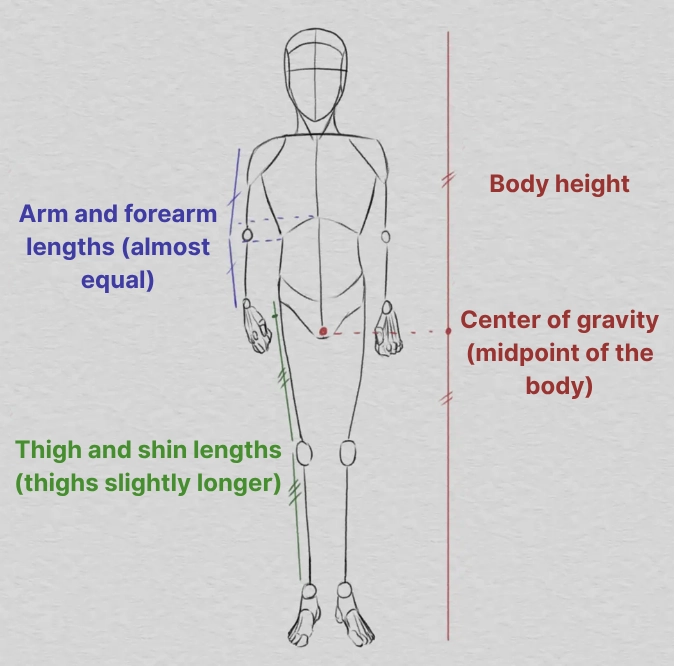
These length ratios are not exact, so they allow us some leeway to vary our characters.
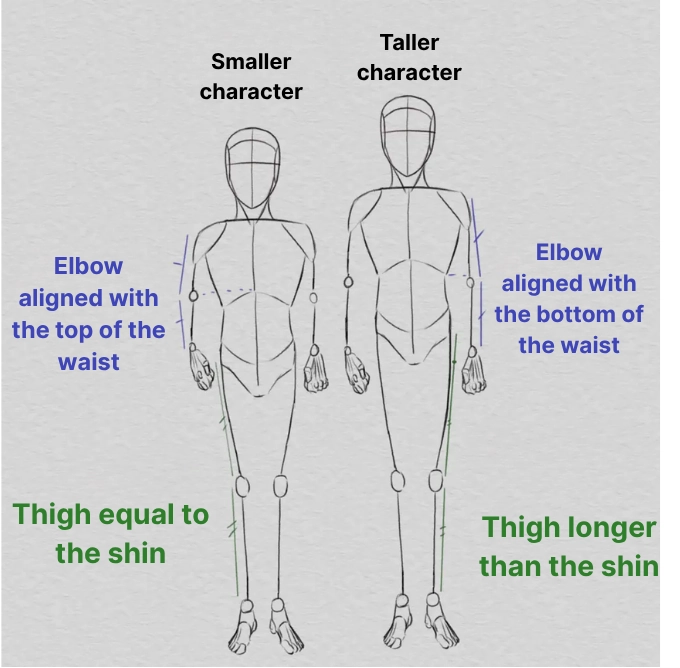
Varying the width proportions
Finally, this method provides a lot of versatility in terms of width, and therefore the morphology of our characters. To vary our proportions in width, we will imagine four horizontal markers on our characters: the brows, the shoulders, the waist, and the hips.
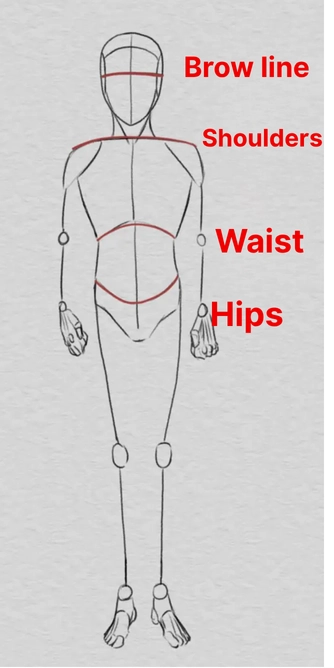
It is possible to adjust the width of these markers to create characters with different body types. A child will generally have a larger head in proportion to their shoulders, while a bodybuilder's shoulders will be very wide compared to their head or hips.

You now have all the tools you need to create proportionate characters. Have fun varying their proportions by following the advice in this article to achieve realistic and original results!
Written and illustrated by Louis Grieves

